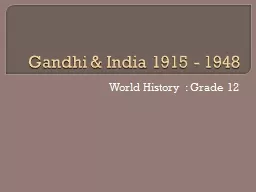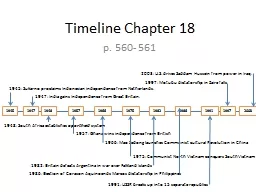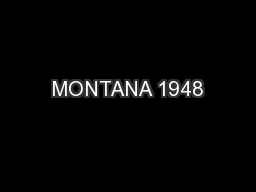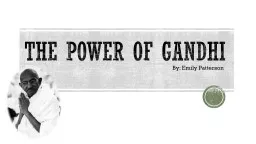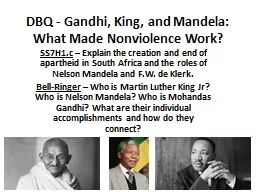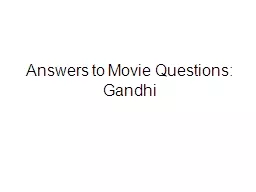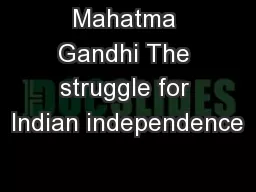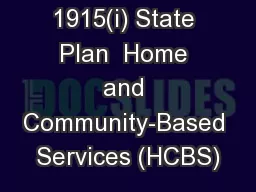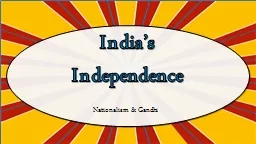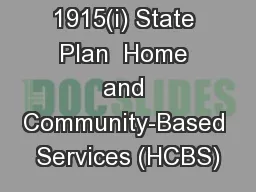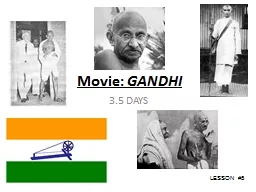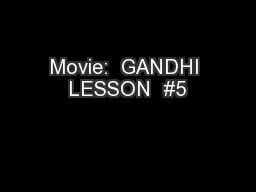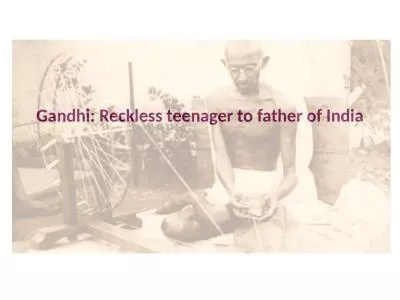PPT-Gandhi & India 1915 - 1948
Author : alida-meadow | Published Date : 2017-12-04
World History Grade 12 Key Terms Words Viramgam 1915 Rowlatt Satyagraha Rowlatt BillAct General Hartal Protest Amritsar Massacre General Dyer Chauri Chaura
Presentation Embed Code
Download Presentation
Download Presentation The PPT/PDF document "Gandhi & India 1915 - 1948" is the property of its rightful owner. Permission is granted to download and print the materials on this website for personal, non-commercial use only, and to display it on your personal computer provided you do not modify the materials and that you retain all copyright notices contained in the materials. By downloading content from our website, you accept the terms of this agreement.
Gandhi & India 1915 - 1948: Transcript
World History Grade 12 Key Terms Words Viramgam 1915 Rowlatt Satyagraha Rowlatt BillAct General Hartal Protest Amritsar Massacre General Dyer Chauri Chaura NCM 19201922 . Everything You Need To . K. now . A. bout The Election of 1948 To Succeed In APUSH. www.Apushreview.com. Key Ideas Before The Election. World War II ended in 1945, The Cold War was in full effect. 1947. p. 560- 561. 1945. 2003. 1947. 1948. 1957. 1966. 1975. 1982. 1986. 1991. 1997. 1945: Sukarno proclaims Indonesian independence from Netherlands.. 1947: India gains Independence from Great Britain.. 1948: South Africa establishes . SETTING. Write as much as you can for each of the following questions…try and think of examples!. How is the ‘harsh life’ demonstrated?. Why is there so much description given to Bentrock and its location?. By: Emily Patterson & Gabrielle . Carley. “. I object to violence because when it appears to do good, the good is only temporary; the evil it does is permanent.. -Mahatma Gandhi. “. http://www.brainyquote.com/quotes/authors/m/mahatma_gandhi.html. And, India’s Independence. Early Years. Ghandi. was born in . Porbandar. , India in 1869. He was the . youngest. of six children.. When Gandhi was . 13. years old he married . Hasturbai. . Makanji. SS7H1.c. – Explain the creation and end of apartheid in South Africa and the roles of Nelson Mandela and F.W. de Klerk.. Bell-Ringer. – Who is Martin Luther King Jr? Who is Nelson Mandela? Who is Mohandas Gandhi? What are their individual accomplishments and how do they connect?. Introduction: Assassination and Funeral. Where and when does the assassination of Gandhi occur?. New Delhi, India. January 30. th. , 1948. Who said about Gandhi that, “Generations to come will scare believe that such a one as this ever in flesh and blood walked upon this earth”?. Early Life. Born 1869 as. Mohandas Karamchand Gandhi. From a middle class Hindu family; studied law in England. Left India to work as a legal representative for Muslim-Indian traders in South Africa from 1893-1914. Kathy Poisal . (Additional material added by R. Cooper). Center for Medicaid, CHIP, and Survey & Certification (CMCS). Disabled and Elderly Health Programs Group. Division of Long Term Services and Supports. Standards. SS7H3 The student will analyze continuity and change in Southern and Eastern Asia leading to the 21st century. . a. Describe how nationalism led to independence in India . and Vietnam. . b. Describe the impact of Mohandas Gandhi’s belief in non-violent protest. . Kathy Poisal . (Additional material added by R. Cooper). Center for Medicaid, CHIP, and Survey & Certification (CMCS). Disabled and Elderly Health Programs Group. Division of Long Term Services and Supports. 3.5 DAYS. Gandhi, Day #1. Gandhi in South Africa. 1893-1915. 50 min. total. Just start from the beginning.. Starts with assassination of Gandhi. Then backpedals to South Africa for his development of Civil Disobedience. 3.5 DAYS. Gandhi, Day #1. Gandhi in South Africa. 1893-1915. 50 min. total. Just start from the beginning.. Starts with assassination of Gandhi. Then backpedals to South Africa for his development of Civil Disobedience. father. of . India. Great Soul. Mohandas . Karamchand. Gandhi . is. . known. as Mahatma . meaning. ‘Great Soul’. He . was. an . astute. . political. . campaigner. . who. . fought. for Indian .
Download Document
Here is the link to download the presentation.
"Gandhi & India 1915 - 1948"The content belongs to its owner. You may download and print it for personal use, without modification, and keep all copyright notices. By downloading, you agree to these terms.
Related Documents

